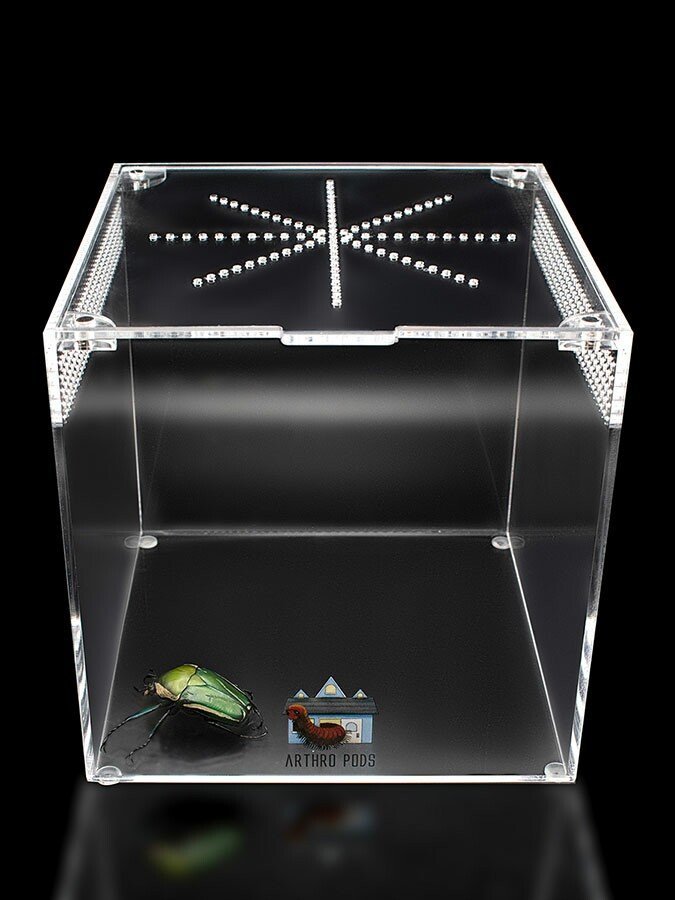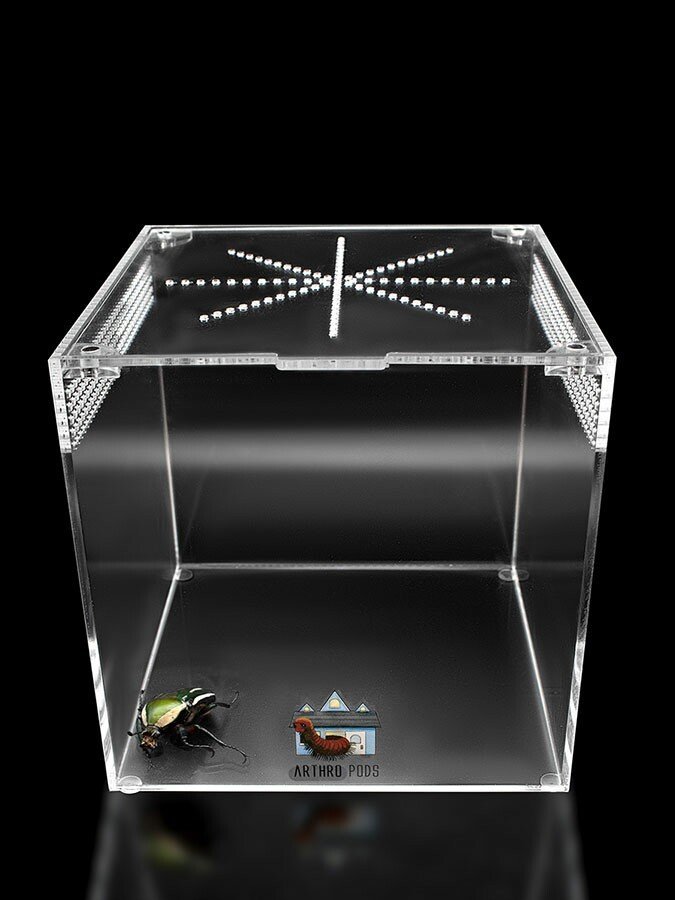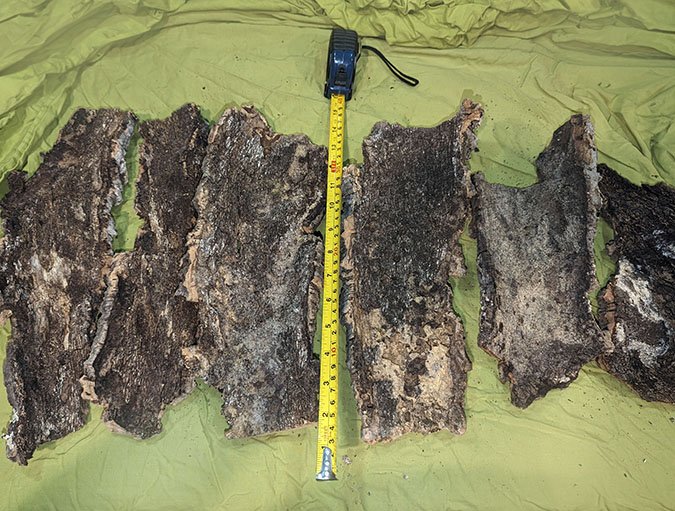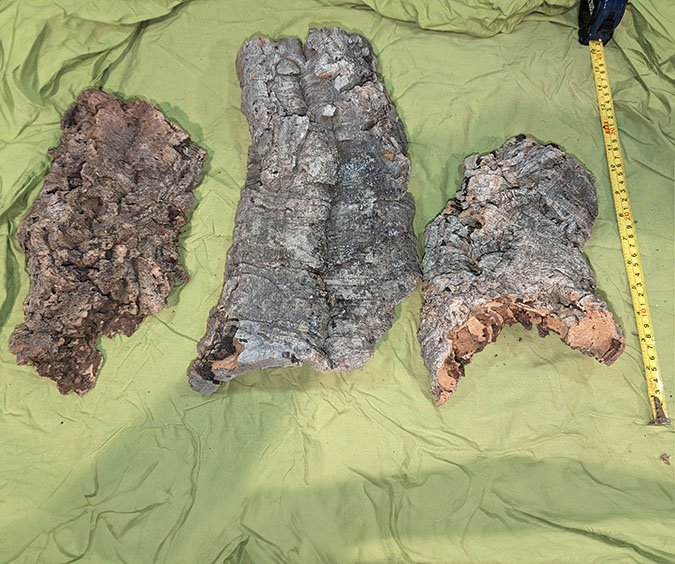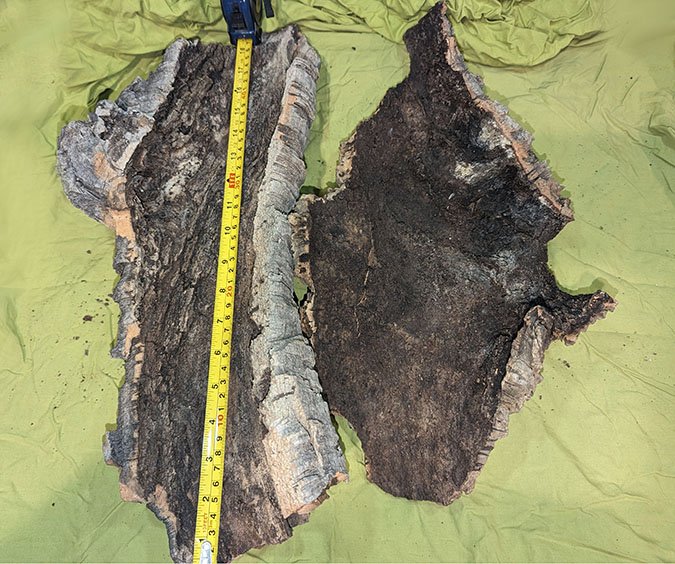Orphnaecus sp 'Quezon Blue'
Orphnaecus sp. 'Quezon Blue', commonly known as the Quezon Blue Earth Tiger Tarantula, is a rare and visually captivating fossorial species native to the forested provinces of Quezon, Philippines. This newly emerging tarantula in the hobby is a member of the Orphnaecus genus—an endemic Philippine group known for its fast, defensive behavior, and stunning coloration. The ‘Quezon Blue’ variety stands out for its bluish to violet iridescence, particularly on the legs and carapace, contrasting with the more subdued rust-brown and earth tones of the body.
As an Old World tarantula, this species lacks urticating hairs and relies on speed, threat postures, and venom for defense. It is extremely reactive and fast-moving, making it unsuitable for handling, but a fascinating subject for observation in secure, naturalistic enclosures. Though defensive, it is not inherently aggressive and will often retreat to its burrow when disturbed.
Like its close relative, Orphnaecus philippinus, the Quezon Blue Earth Tiger is a burrowing, web-dominant species that constructs elaborate, silk-reinforced tunnel systems. It frequently seals itself into its retreat, particularly when pre-molt or settling into a new habitat. While not an active display tarantula, it rewards patient keepers with occasional dramatic feeding behavior and brief flashes of its beautiful iridescence during nighttime activity or enclosure maintenance.
Orphnaecus sp. 'Quezon Blue', commonly known as the Quezon Blue Earth Tiger Tarantula, is a rare and visually captivating fossorial species native to the forested provinces of Quezon, Philippines. This newly emerging tarantula in the hobby is a member of the Orphnaecus genus—an endemic Philippine group known for its fast, defensive behavior, and stunning coloration. The ‘Quezon Blue’ variety stands out for its bluish to violet iridescence, particularly on the legs and carapace, contrasting with the more subdued rust-brown and earth tones of the body.
As an Old World tarantula, this species lacks urticating hairs and relies on speed, threat postures, and venom for defense. It is extremely reactive and fast-moving, making it unsuitable for handling, but a fascinating subject for observation in secure, naturalistic enclosures. Though defensive, it is not inherently aggressive and will often retreat to its burrow when disturbed.
Like its close relative, Orphnaecus philippinus, the Quezon Blue Earth Tiger is a burrowing, web-dominant species that constructs elaborate, silk-reinforced tunnel systems. It frequently seals itself into its retreat, particularly when pre-molt or settling into a new habitat. While not an active display tarantula, it rewards patient keepers with occasional dramatic feeding behavior and brief flashes of its beautiful iridescence during nighttime activity or enclosure maintenance.


Orphnaecus sp. 'Quezon Blue', commonly known as the Quezon Blue Earth Tiger Tarantula, is a rare and visually captivating fossorial species native to the forested provinces of Quezon, Philippines. This newly emerging tarantula in the hobby is a member of the Orphnaecus genus—an endemic Philippine group known for its fast, defensive behavior, and stunning coloration. The ‘Quezon Blue’ variety stands out for its bluish to violet iridescence, particularly on the legs and carapace, contrasting with the more subdued rust-brown and earth tones of the body.
As an Old World tarantula, this species lacks urticating hairs and relies on speed, threat postures, and venom for defense. It is extremely reactive and fast-moving, making it unsuitable for handling, but a fascinating subject for observation in secure, naturalistic enclosures. Though defensive, it is not inherently aggressive and will often retreat to its burrow when disturbed.
Like its close relative, Orphnaecus philippinus, the Quezon Blue Earth Tiger is a burrowing, web-dominant species that constructs elaborate, silk-reinforced tunnel systems. It frequently seals itself into its retreat, particularly when pre-molt or settling into a new habitat. While not an active display tarantula, it rewards patient keepers with occasional dramatic feeding behavior and brief flashes of its beautiful iridescence during nighttime activity or enclosure maintenance.
What's the ideal diet for a Quezon Blue Earth Tiger Tarantula?
All Tarantulas can eat a variety of feeders. Stick to crickets, dubia roaches, silkworms, horned worms occasionally, and a superworm or mealworm as the occasional treat!
How should I keep a Quezon Blue Earth Tiger Tarantula?
You can start with the Fossorial Fissure Small enclosure for this particular creature. When they are about ⅓ the size, you will want to go to the Fossorial Fissure Medium or Fossorial Fissure Large enclosure. Feed them as slings once a week, twice if their opisthosoma (abdomen) looks small, but if the opisthosoma is wider than their prosoma (pneumothorax), then wait a couple of days to feed. For juveniles or adults, stick to feeding once a week, nothing larger than their opisthosoma. Make sure to keep a full water dish at all times; wider and deeper is preferred.
How long could a Quezon Blue Earth Tiger Tarantula live?
Females are believed to live upwards of 15+ years, and males not exceeding around 4 years of age. All estimates are based on multiple sources.




